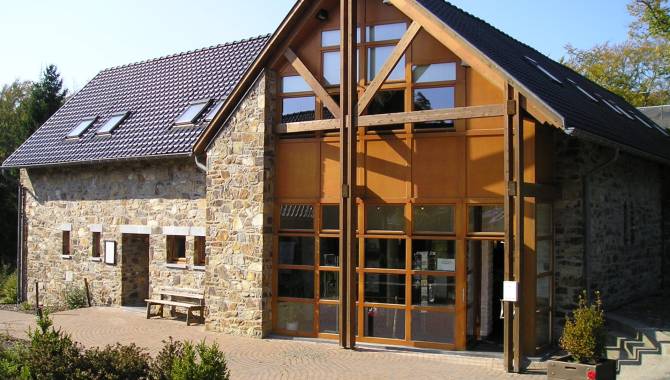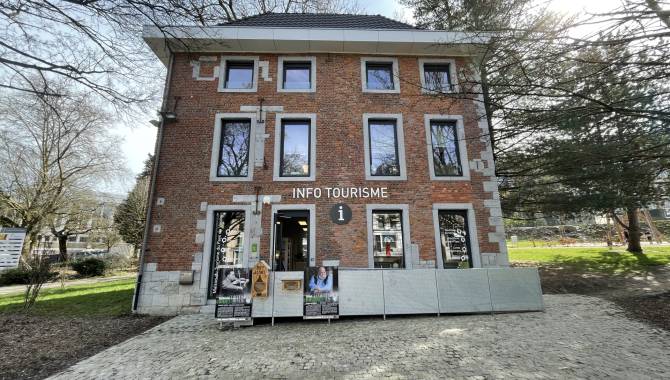Climate and landscape
Wild weather indeed! With 202 days of precipitation and 150 foggy days per year, the mood in the High Fens is predominantly mystical. Often, dense bundles of cloud block out the sky and wafts of mist make it difficult to see the ground. Both these phenomena give the observer the feeling of being in another world, a world full of secrets and myths come alive.
Even the summer is cooler and wetter than average, whilst the winters are long and hard, not infrequently enveloping the landscape with a Siberian chill. Frosts down to -20°C are no exception, with an annual average of 98 days of frost per year. Yet that's not all the winter has to offer! About 40 days of snow also speak a very clear language.
The first frost usually comes as early as the end of October. Statistically, the first snow falls shortly after that, in November. It's not until then that more agreeable temperatures follow. An average annual temperature of just 7.5° C - only June, July and August count as frost-free months – leaves just four months for the seasons of spring, summer and autumn.
Unique in the northern latitudes

The High Fens have a moor and heath landscape which is otherwise only found in much more northerly latitudes – or much more elevated locations. The cold climate, the high precipitation at a continuously high humidity, and the special composition of the soils have given rise to a flora and fauna which are quite untypical of our climatic region.
There are two natural phenomena that explain the presence of this special ecosystem in Belgium. The plateau of the High Fens is the first obstacle the clouds encounter on their way in off the Atlantic. This results in an above-average precipitation of over 1,400 mm of rain per year and m2. The other phenomenon is the impermeability of the rock, which prevents that precipitation from finding its way down to lower levels. These conditions are conducive to the establishment of wetlands such as moors and swamps.
A landscape formed by human hand

A thousand years ago, deciduous forest (beech, alder, birch, oak and others) covered a large part of the plateau. There were only a few moorland areas here and there which were not covered by forest.
Human exploitation of the area began in the Middle Ages. This upset the balance of the habitat completely. Deforestation, grazing, agriculture and peat-cutting gradually transformed the deciduous forest into an expansive heath landscape. In the 19th century, the introduction of the spruce caused fresh upheaval because of the intensive dehydration it required. In the 20th century, it was tourism that led to a different kind of exploitation of the plateau.
Streams, rivers, dams
What happens to the water in the rainy fens? All the rainwater that falls on the noble head of Belgium, but can no longer be held by the mosses or emerges later through the peaty soil, gathers in rivulets. Small systems of streams gradually merge and form torrents. These then thunder blithely through the valleys of the region, some of which have cut their way into the rock, forming deep ravines. Rivers such as the Hill, the Schwalm, the Rur, the Warche, the Soor, the Our or Olef, the Trôs Marêts, the Holzwarche, the Warche, the Gileppe, the Getzbach, the Weser, the Eschbach, the Steinbach and dozens of small streams all have their origin in the High Fens and make their way, sometimes quietly and gracefully, but in most cases impetuously and wildly, through swampland, past rock walls and through old forests, before gushing out at the foot of the fens in dams or larger rivers. What wonderful pieces from Nature's inexhaustible jigsaw puzzle!
On their way, they pass five large dams, four of which are on Belgian territory. The oldest and probably the best known reservoir dam in the High Fens is the Gileppe dam. Construction of this dam, adorned by an impressive stone lion, 13.5 m tall and 300 tonnes in weight, was completed in 1875. The purpose at that time was to regulate the quantities of process water for the textile industry on the Weser. Apart from the Gileppe dam, the Weser (in Eupen) and Warche (in Bütgenbach and Robertville) have dams of their own. Together, they now supply more than a million people with drinking water and help to generate green electricity.
The flora
Rare species of moorland and wetland plant can be found here, such as bog asphodel, cotton grass, heather, bog rosemary, chickweed wintergreen, cranberry...
The moor
Moors are peat-forming ecosystems. Peat is an organic sediment, which forms from the gathering of plant substances that have decomposed incompletely or not decomposed at all. A moor can only come into being if the quantity of water received (precipitation, snow, ground-water) exceeds the water losses (surface outflow, evaporation, plant transpiration) on a permanent basis. The soil needs permanent water saturation. And there is another major prerequisite: if peat is to form, there must be stagnant or slow-flowing water.
The giant sponge
The moor areas of the High Fens are dotted with velvety moss cushions and clumps. These consist of peat moss, a small, primitive sporophyte, which loves these moist conditions that are so low in nutrients. Over time, a thick layer of dead plant material forms which, entrapped in standing water and without air, is compressed over the centuries to become peat. The areas also feature heather and cross-leaved heath, cyperaceae, rushes and some species of sedge.
The fact that nature takes a whole year to form one millimetre of peat explains the moor's prodigal handling of the resource of time. Just like kitchen paper, mosses absorb large amounts of water. With their countless moss clumps, the High Fens are a giant sponge. Moss can absorb several times its own dry weight in ground-water and rainwater. Peat moss can hold three times its dry weight in water! That's a pretty good achievement! It enables sphagnum, as peat moss is also known as, to survive in dry periods too. Not only the living peat mosses are excellent holders of water; the dead peat layer beneath them can also hold a large amount and only releases it very slowly indeed. One thing is certain: The High Fens won't turn into another Sahara all that quickly.
Plants typical of the High Fens
Although the aura of the moor sometimes alternates between gloomy and mystical, there are plants which ensure a joyous, colourful, fresh display at times. For example, common cottongrass and hare's-tail cottongrass. When spring comes to an end, they give the moor a fairylike character with their little white curly heads. On their featherweight strands, the white cotton balls let the wind carry the filigree seeds out over the moor. At the beginning of July, the flowering bog asphodel lays a yellow garland around the expanses of open water. And there's common sundew too. The leaves of the sundew are equipped with tentacles which, with the sticky droplets they hold, lure inquisitive insects and are able to digest them thanks to enzymes that the plant itself produces. The proteins from these luckless insects are a welcome change in the menu of the moor landscape, which is otherwise rather dull.
In the drier wood and heath landscape, hikers will also find cranberry, bilberry and bog bilberry, which produce little dots of colour that give the moor a new coat of paint here and there. Other botanical eyecatchers are pieris, marsh gentian, crowberry and chickweed-wintergreen.
Wildlife
The black grouse – an endangered bird species
The High Fens are home to some genuine survival artists from the world of animals and plants. They love the heavenly tranquillity of the fens, yet they appreciate the tough living conditions and sophisticated equilibrium of a functioning ecosystem. And there's one particularly endangered species of bird among them: the black grouse. Lyrurus tetrix is a member of the grouse subfamily and has found a habitat in the High Fens. In the spring, the cocks gather for their spectacular courtship display. They attempt to win the favour of the lady of their choice with a spectacular performance, while putting their male competitors in their place with the ritualised fighting display. Sadly, things don't look good for the black grouse. The situation only needs to deteriorate just a little bit further, and the High Fens will have lost one of its treasures forever.
Resettlement
However, in collaboration with German and Dutch specialists, a team from the University of Liège is aiming to bring the black grouse population in the High Fens back up to a better level. Ten specimens were released in the High Fens in 2017 and another 18 animals from Sweden in the spring of 2018. According to the organisers of the project, there is hope that the black grouse will succeed in settling again and breeding in the High Fens.
Bird species in the High Fens
Birds that breed in the High Fens are the pygmy owl, Tengmalm's owl, goshawk, red kite, middle spotted woodpecker, grasshopper warbler, meadow pipit, red-backed shrike, raven and black stork. During spring and in autumn, hikers can also observe large flocks of vociferous, trumpeting cranes, which stop off in the moor to take a rest. The established winter guests include marsh hawks, shrikes, crossbills, bullfinches and redpolls. With a pair of binoculars, many a feathered inhabitant can be admired here.
Butterflies in the High Fens
Large wild animals such as red deer, roe deer and wild pigs frequent the fens, together with wild cats, badgers and foxes. But the High Fens with their moorland areas, woods and river valleys are also home to various different kinds of butterfly. Blue and red coppers, the bog fritillary, the lesser marbled fritillary, the moorland fritillary and the silver shark moth are rare gems of nature among these graceful artists of the air. Bound to certain habitats and specific host plants, they populate the roof of Belgium. Hovering above the moor landscape, 37 different kinds of dragonfly which hunt smaller insects are known to exist. Being the rarest, the subarctic peat-moor hawker can be considered the most spectacular among them.


































